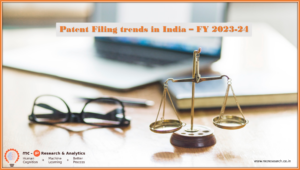WHAT’S NEW IN CRYPTOGRAPHY ?
Since times known cryptography has been used to protect data, from making simple shifts in digits to computer based crypto- algorithms to zero-knowledge proof concepts. In present scenario where data is free flowing across networks, the threat of unauthorized access and illegal use of these data has increased, which is a challenge to the traditional cryptography methods. To tackle the issue of ever increasing threats and challenges, new cryptographic methods have been invented a few of which are discussed here.
New cryptographic trends
Post-Quantum Cryptography (PQC):
PQC was developed with the intension to resist data security attacks and ensure security of data encryption even in the face of quantum computers’ computational power.
Homomorphic Encryption:
Homomorphic encryption method allows computation on encrypted data without performing decryption, which enables outsourcing of complex computations to the cloud while maintaining data confidentiality.
Zero-Knowledge Proofs (ZKPs):
ZKPs are advanced method use for privacy-preservation in real-world applications like financial transactions, identity verifications, etc. These proofs can convince a second party the validity of data without revealing any additional information.
Secure Multi-Party Computation (MPC):
MPC enables multiple parties to jointly process a function using their own private inputs while preserving the privacy of each participant’s data. MPC has recently gained momentum in the field of financial services, healthcare, and collaborative machine learning.
Integrating AI and cryptography
To stay ahead of security threats, researchers and professionals integrated Artificial Intelligence with cryptography. AI is used to build robust cryptographic algorithms like AES (Advanced Encryption Standard), Triple DES (Data Encryption Standard) or RSA (Rivest-Shamir-Adleman). AI based cryptographic systems adapts to evolving threats, identify patterns enabling them to detect potential breaches and apply mitigation strategies in real time.
How is Artificial intelligence leveraged in cryptographic systems?
Key Generation and Management:
AI techniques like deep learning is used in key generation by improving the quality and unpredictability of random number generated. Huge datasets, similar patterns and various key structures can be analysed by AI and provide enhanced security. Additionally, AI is used for efficient key management which reduces the risk of misusage of encryption keys.
Anomaly Detection and adaptive designs using AI
AI algorithms identifies unusual activities that indicates potential attacks using network analysis, system logs or user behavioral data. This helps in providing accurate mitigation strategies and limit the impact of security breach, if occurred. AI also enables adaptive cryptography, by continuously analysing and monitoring data, and adapting the cryptographic parameters and protocols accordingly for providing highly efficient threat mitigation in real time.
Multi-Factor Authentication (MFA) using AI
AI enhanced (MFA) systems analyse behavioral biometrics and patterns based on user interactions and use them for distinguishing between authentic users and potential threats. AI systems continuously learn and update user profiles, for efficient identification of anomalies or unauthorized access attempts.
Top companies pioneering AI based cryptography
According to the intellectual property (patent) data, drastic increase in patent filings have been observed since 2018, which shows the significance of this technology in the current scenario. Top companies involved in AI based cryptography technology are Intel, IBM, Microsoft, Samsung, Google and Amazon
The patent filing trends of these companies for past ten years is depicted in the table given below.

In conclusion, cryptographic systems which leverages Artificial Intelligence have enhanced potential for providing secure communication and data protection. Cryptographic systems with AI integration, can design flawless defense mechanisms against the constantly evolving threats and efficiently protect the confidential information. In this digital world, where cyber threats are advancing at a fast pace, it is vital to embrace the versatility of Artificial intelligence in safeguarding our data.
© Molecular Connections Private Limited
For more information, contact priorart@molecularconnections.com
For more updates subscribe IP Tech Insider






